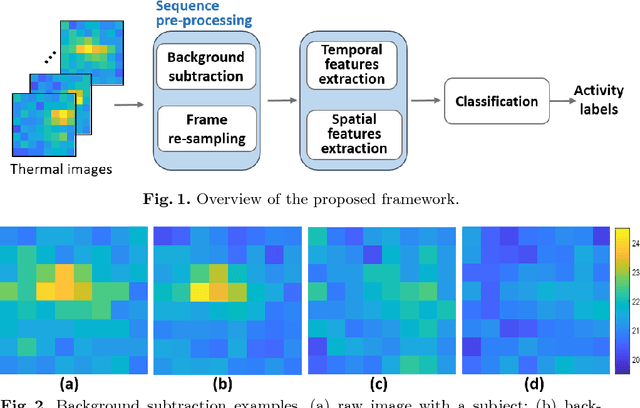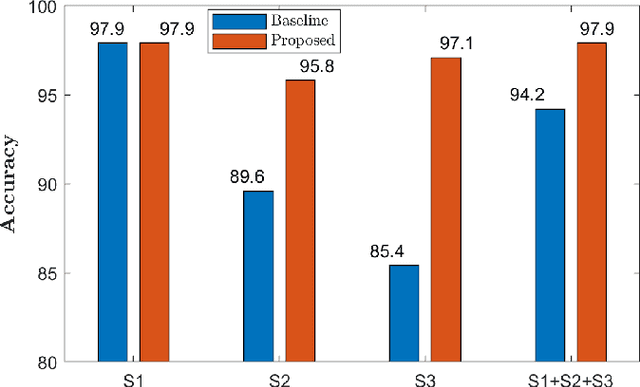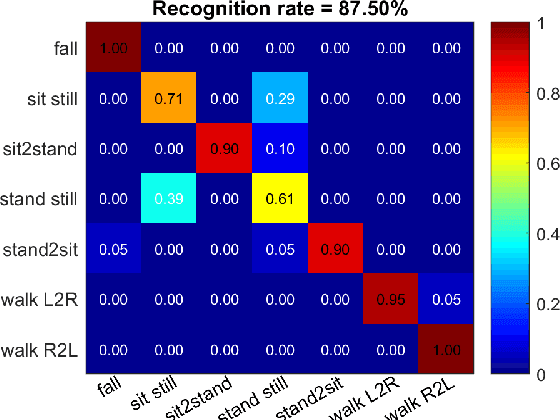Yanguo Jing
Unsupervised Doppler Radar-Based Activity Recognition for e-healthcare
Mar 18, 2021



Abstract:Passive radio frequency (RF) sensing and monitoring of human daily activities in elderly care homes has recently become an emerging topic due to the demand with ageing population. Micro-Doppler radars are an appealing solution considering their non-intrusiveness, deep penetration, and high-distance range. This study presents an unsupervised framework for human activity monitoring using Doppler streams. Two unsupervised feature extraction strategies based on convolutional filtering and texture analysis of Doppler images are considered. For the former, encoded features using Convolutional Variational Autoencoder (CVAE) are compared with Convolutional Autoencoder (CAE) features. For the latter, Grey-Level Co-occurrence Matrix (GLCM) is used. These methods are further compared with unsupervised linear feature extraction based on Principal Component Analysis (PCA) and Singular Value Decomposition (SVD). Using these features, unsupervised samples clustering is performed using K-Means and K-Medoids. Actual labels are solely used for evaluation and visualisation. The results showcase 82.5% and 84% average testing accuracies for CVAE features and 77.5% and 72.5% average testing accuracy using texture features based on GLCM using K-Means and K-Medoids respectively. The results show superiority of CVAE and GLCM features compared to PCA, SVD, and CAE with more than 20% average accuracy. Furthermore, for high-dimensional data visualisation, three manifold learning techniques are considered including t-Distributed Stochastic Neighbour Embedding (t-SNE), Multidimensional Scaling (MDS), and Locally Linear Embedding (LLE). The visualisation methods are compared for projection of raw data as well as the encoded features using CVAE. All three methods show an improved visualisation ability when applied on the transformed CVAE data.
Home Activity Monitoring using Low Resolution Infrared Sensor
Nov 13, 2018



Abstract:Action monitoring in a home environment provides important information for health monitoring and may serve as input into a smart home environment. Visual analysis using cameras can recognise actions in a complex scene, such as someones living room. However, although there the huge potential benefits and importance, specifically for health, cameras are not widely accepted because of privacy concerns. This paper recognises human activities using a sensor that retains privacy. The sensor is not only different by being thermal, but it is also of low resolution: 8x8 pixels. The combination of the thermal imaging, and the low spatial resolution ensures the privacy of individuals. We present an approach to recognise daily activities using this sensor based on a discrete cosine transform. We evaluate the proposed method on a state-of-the-art dataset and experimentally confirm that our approach outperforms the baseline method. We also introduce a new dataset, and evaluate the method on it. Here we show that the sensor is considered better at detecting the occurrence of falls and Activities of Daily Living. Our method achieves an overall accuracy of 87.50% across 7 activities with a fall detection sensitivity of 100% and specificity of 99.21%.
 Add to Chrome
Add to Chrome Add to Firefox
Add to Firefox Add to Edge
Add to Edge